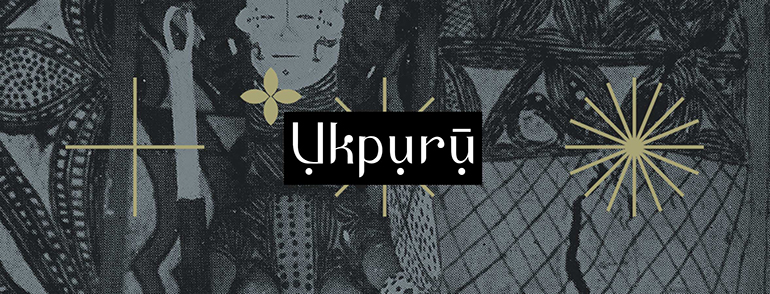 "The Inokon Society, Creek Town, Calabar." Postcard from c. 1910s-20s. Ụ́kpụ́rụ́ Collection.
"The Inokon Society, Creek Town, Calabar." Postcard from c. 1910s-20s. Ụ́kpụ́rụ́ Collection.
Inokon or Inokun may be related to Okon, a founding figure in the history of Arochukwu. It is the name the Aro people are known by in the Cross River area.
The Aros are often called Inokuns. Authorities disagree as to the difference between these names. It is stated that the Aros are the aristocratic or freeborn caste of the Inokun tribe, that there are sixteen Aro towns, each presided over by a chief of its own, and that these chiefs in united council used to govern the whole Inokun tribe. Of these sixteen towns, all in the near neighbourhood of the "Long Juju," the principal is Ibum [Ibom]. The Assistant District Commissioner used to live down in the town itself, but it was found to be damp and unhealthy, so the station was moved to the top of a hill about one and a half miles outside, previously occupied as an outlying farm of the township. Ibum is marked "Aro Chuku'' on the map, and the Government residence stands about midway between Aro Chuku and Obagu. From this hill one looks down upon the Aro towns, indicated in the densely wooded valley by the columns of blue smoke overhanging them.
– Charles Partridge (1905). Cross River Natives. p. 54.

The articles exposed for sale were of the common produce of the country, with cloth and other European goods imported into Calabar and Bonny. Those latter are brought across the country by the people of Inokun, a town or district of Ibo, who travel among these tribes, making trade in every commodity they can get sold—slaves included. Their women are distinguished by the tasteful and elaborate mode in which they dress their hair. Their scanty clothing—merely a loins' cloth—gives little scope for displaying their desire for personal adornment, but they are at great pains to secure this in their hair-dressing. We do not often see such ornamental heads in Calabar; but the women of Gaboon have an elaborate mode of producing them. It is said there that it occupies a day to dress a head, but one dressing will suffice for a fortnight.
– Hugh Goldie (1901). Calabar and Its Mission. p. 287.

No comments:
Post a Comment